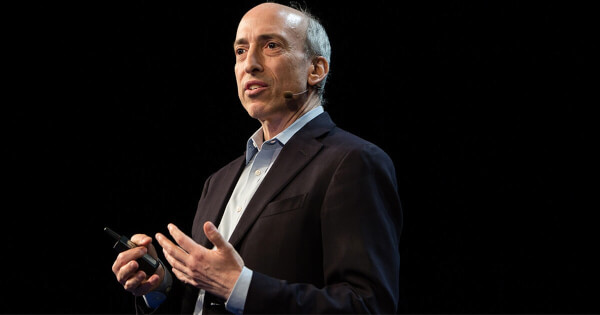Dispute between Deutsche Bank and Tether over stablecoin stability report

join us telegram A channel to stay up to date on breaking news coverage
In a contentious interaction, leading stablecoin operator Tether has issued a report calling into question the viability of stablecoins, including Tether’s own USDT, from Deutsche Bank. Bank) was fiercely criticized. A May 7 report speculated on the possibility of a destabilizing “peso moment” similar to Terraform Lab’s TerraUSD (TUSD) collapse in 2022, which wiped about $40 billion from the market in just a few days.
Stability issues and transparency analysis of Tether operations highlighted in Deutsche Bank report
A Deutsche Bank analysis that reviewed 334 currency pegs over the past 223 years found that nearly half of pegged currencies fail within the average lifespan of 8 to 10 years. This historical perspective has led Deutsche Bank analysts to predict significant volatility and an eventual depegging event within the cryptocurrency stablecoin sector. Analysts have highlighted a general lack of transparency and sensitivity to speculative movements as a key factor likely to lead to the failure of many stablecoins.
Moreover, the bank specifically targeted Tether, citing its “questionable” solvency status and opaque handling of reserve disclosures. In response, Tether released a statement attacking the report’s credibility and criticized the report’s lack of specific data and reliance on “vague claims.” The stablecoin company also dismissed comparisons to TerraUSD as “misleading and irrelevant,” given that Terra is an algorithm-based stablecoin, unlike Tether, which is backed by reserves.
Tensions are rising over the viability of stablecoins and financial transparency.
A Tether spokesperson responded that Deutsche Bank’s criticism seemed ironic. This may be seen as undermining its power to assess others within the financial sector, especially given the bank’s own history of imposing fines and penalties. Despite criticism over transparency, Tether has provided several financial certifications that indicate it maintains more than $110 billion in fiat-denominated reserves, although this does not equate to a full financial audit. A financial audit examines previously undisclosed data, risk and compliance issues, while an attestation only captures a snapshot of specific data points.
Scrutiny of Tether’s deposit transparency has been an issue for a long time. Under the 2021 settlement, Tether paid an $18.5 million fine and was banned from operating in New York. This follows claims that Tether misrepresented how much of its reserves were backed by fiat collateral. Nonetheless, Cantor Fitzgerald CEO Howard Lutnick expressed confidence in Tether’s financial health, stating his belief that the company actually has the funds it needs.
The dispute continues to highlight fundamental concerns about the stability and transparency of the stablecoin market, highlighting the delicate balance between cryptocurrency innovation and the need for regulatory oversight and clear financial practices.
“Deutsche Bank’s history of fines and penalties raises doubts about its own standing that could lead to criticism of others in the industry. DB has also been ranked the world’s riskiest bank by the International Monetary Fund. “
Tether criticized Deutsche Bank’s suggestion that its stablecoin could fail.
— Paolo Ardoino 🍐 (@paoloardoino) May 10, 2024
Dogeverse: Revolutionizing the Meme Coin Market through Chain-Hopping Innovation
Dogeverse introduces a groundbreaking concept to the cryptocurrency market featuring the ability to operate on six different blockchain platforms, providing significant advantages for both the near and distant future. Not only is this token unique due to its interoperability, but its attractive mascot Cosmo, a charming Shiba Inu, further enhances its appeal as a meme coin.
Operating on a variety of blockchains such as Ethereum, BNB Chain, Polygon, Base, Solana, and Avalanche, Dogeverse started out as a meme coin, but shows the potential to go much further. This multichain functionality not only expands accessibility to attract users from a variety of platforms who value different features, such as the cost-effectiveness of Solana or the innovative advantages of Ethereum, but also addresses and potentially unifies the fragmented nature of the blockchain community. Dogeverse aims to foster a unified community across these different chains by leveraging technologies like Wormhole and PortalBridge.
Moreover, the project is rich in folklore developments. The project’s mascot, Cosmo, is central to its growing mythology, and each blockchain’s community could potentially add to Cosmo’s legend, elevating him to a mythical status that could rival Dogecoin.
Dogeverse has a broad supply of 200 billion tokens, of which 30 billion are allocated for structured presales. This pre-sale will be divided into 10 phases, with token prices starting at $0.0000290 and going up to $0.000299 in the final phase. The funding goal was set at a soft cap of $8.83 million and a hard cap of $17.02 million.
The token’s multi-chain strategy and the appeal of its knowledge fueled its rapid fundraising success, raising over $300,000 on the first day of pre-sale. Enthusiasm surrounding this innovative token continues to grow, and potential investors are encouraged to learn more and participate at thedogeverse.com.
Visit to Doji Bus


Related news
SMOG – Meme Coin with Rewards
- Airdrop Season 1 Live Starts
- Earn XP to Win $1 Million in Stake
- Cointelegraph Special
- Staking Rewards – 42% APY
- 10% OTC discount – smogtoken.com
join us telegram A channel to stay up to date on breaking news coverage



